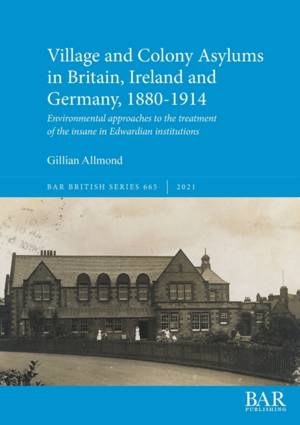
- Afhalen na 1 uur in een winkel met voorraad
- Gratis thuislevering in België vanaf € 30
- Ruim aanbod met 7 miljoen producten
- Afhalen na 1 uur in een winkel met voorraad
- Gratis thuislevering in België vanaf € 30
- Ruim aanbod met 7 miljoen producten
Village and Colony Asylums in Britain, Ireland and Germany, 1880-1914
Environmental approaches to patient treatment in Edwardian institutions for the insane
Gillian AllmondOmschrijving
This book analyses the buildings, interiors and landscapes of asylums for the insane poor in the early part of the twentieth century, exploring the ways in which environments were seen as therapeutic. An innovative type of asylum layout - the village or colony asylum - is considered in detail. Gillian Allmond offers an original approach to asylum analysis, using field observation, documents and published materials to connect asylum materiality to contemporary discourses of health and poverty. The book shows how the Edwardian understanding of the therapeutic qualities of light and air, together with the promotion of bourgeois domestic ideals, influenced the design of exteriors and interiors in the hope of remaking the minds of the mentally ill. Layout analysis includes the discovery that at least one asylum was based on Ebenezer Howard's 'garden city'. This innovative study is a significant contribution to the growing literature on the historical archaeology of institutions.
Specificaties
Betrokkenen
- Auteur(s):
- Uitgeverij:
Inhoud
- Aantal bladzijden:
- 326
- Taal:
- Engels
- Reeks:
- Reeksnummer:
- nr. 665
Eigenschappen
- Productcode (EAN):
- 9781407357584
- Verschijningsdatum:
- 30/09/2021
- Uitvoering:
- Paperback
- Formaat:
- Trade paperback (VS)
- Afmetingen:
- 210 mm x 297 mm
- Gewicht:
- 1052 g

Alleen bij Standaard Boekhandel
Beoordelingen
We publiceren alleen reviews die voldoen aan de voorwaarden voor reviews. Bekijk onze voorwaarden voor reviews.











